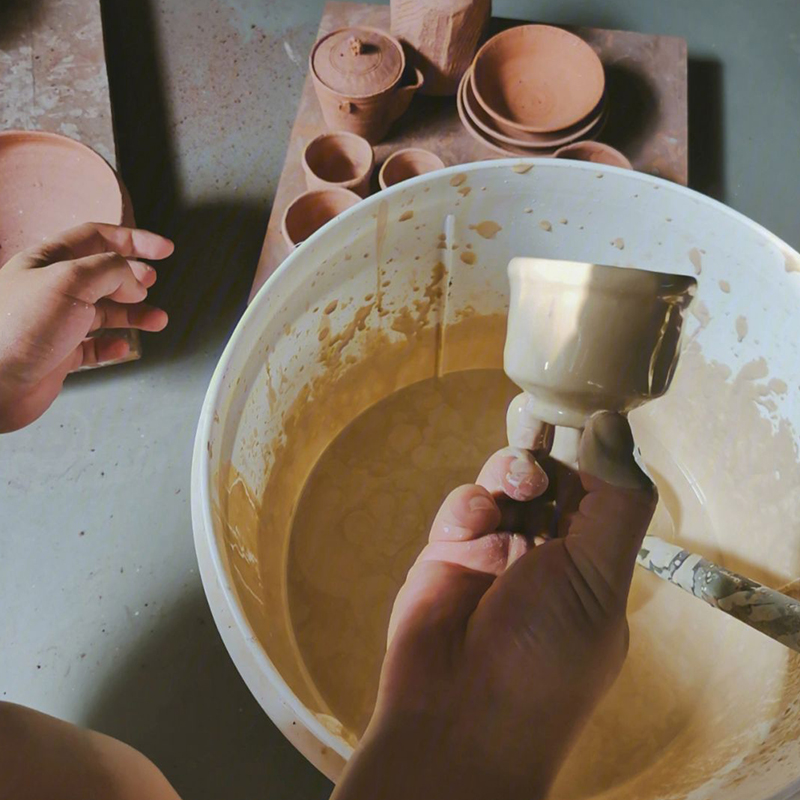You must have seen ceramics of various shapes and colors.However, do you know why ceramics can present all kinds of beautiful colors?
In fact, ceramics generally have a glossy and smooth “glaze” on their surface.
Glaze is made of mineral raw materials (such as feldspar, quartz, kaolin) and chemical raw materials mixed in a certain ratio and finely ground into slurry liquid, applied to the surface of ceramic body. After a certain temperature of calcining and melting,when the temperature drops, forming glassy thin layer on the surface of the ceramic.
As early as over 3000 years ago, Chinese people had already learned to use rocks and mud to make glazes to decorate ceramics. Later, ceramic artists utilized the phenomenon of kiln ash naturally falling on ceramic body to form glaze, and then used plant ash as a raw material for glaze making.
The glaze used in the production of modern daily ceramics is divided into lime glaze and feldspar glaze.Lime glaze is made from glaze stone (a natural mineral raw material) and lime-flyash (the main component is calcium oxide), while feldspar glaze is mainly composed of quartz, feldspar, marble, kaolin, etc.
Adding metal oxides or infiltrating other chemical components into the lime glaze and feldspar glaze, and depending on the firing temperature, various glaze colors can be formed. There are cyan, black, green, yellow, red, blue, purple, etc.White porcelain is a nearly colorless transparent glaze.Generally, the thickness of ceramic body glaze is 0.1 centimeters, but after being calcined in the kiln, it’ll tightly adheres to the porcelain body, which make porcelain dense, glossy, and soft, neither impermeable to water nor producing bubbles,giving people a feeling as bright as a mirror. At the same time, it can improve durability, prevent pollution, and facilitate cleaning.

Post time: Apr-26-2023



